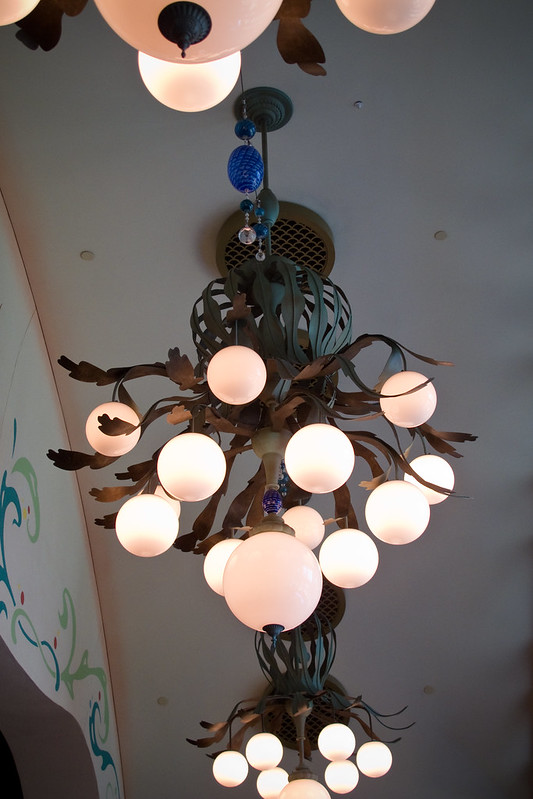Paradise Pier
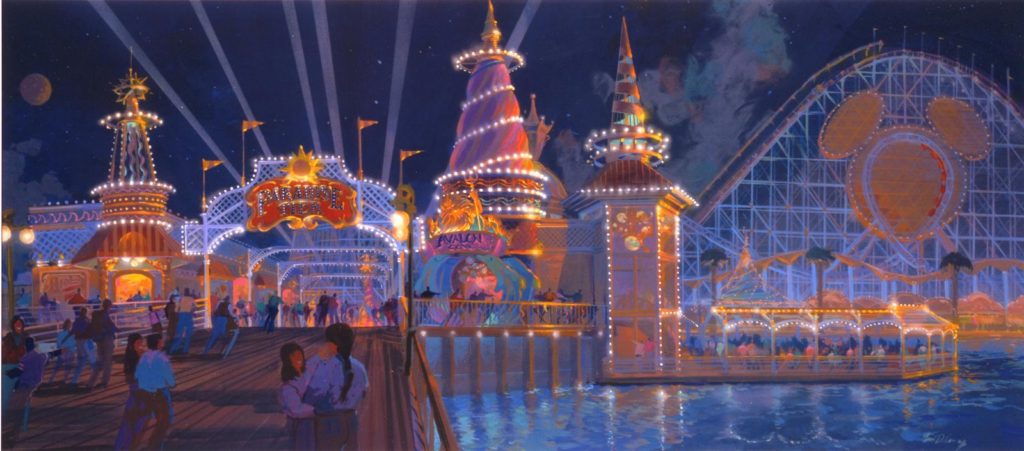
During our walkthrough of Disney’s California Adventure in 2001, you might’ve been surprised to see that the park’s first three “districts” (Sunshine Plaza, Hollywood Pictures Backlot, and the Golden State) contained a cumulative three rides. That’s it. Three.
That’s because – even then – a bulk of the park’s ride capacity lived in Paradise Pier. Ostensibly designed as an ode to California’s seaside boardwalks and trolley parks (conveniently ignoring that Walt Disney designed Disneyland in no small part because he so disliked those amusement parks), Paradise Pier was pretty much representative of everything wrong with “DCA 1.0.”
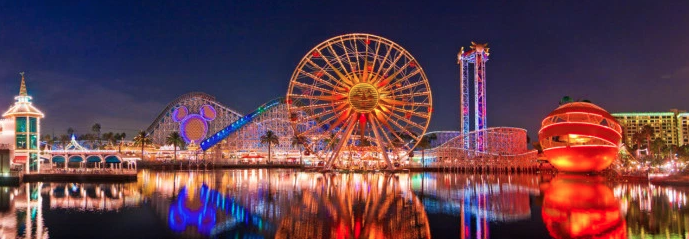
For example, the amusement zone – which stretches across the far side of the bean-shaped “Paradise Bay” – was made almost entirely of “off-the-shelf” rides commercially available to regional amusement parks (which cost a whole lot less than a day at Disney’s California Adventure did).
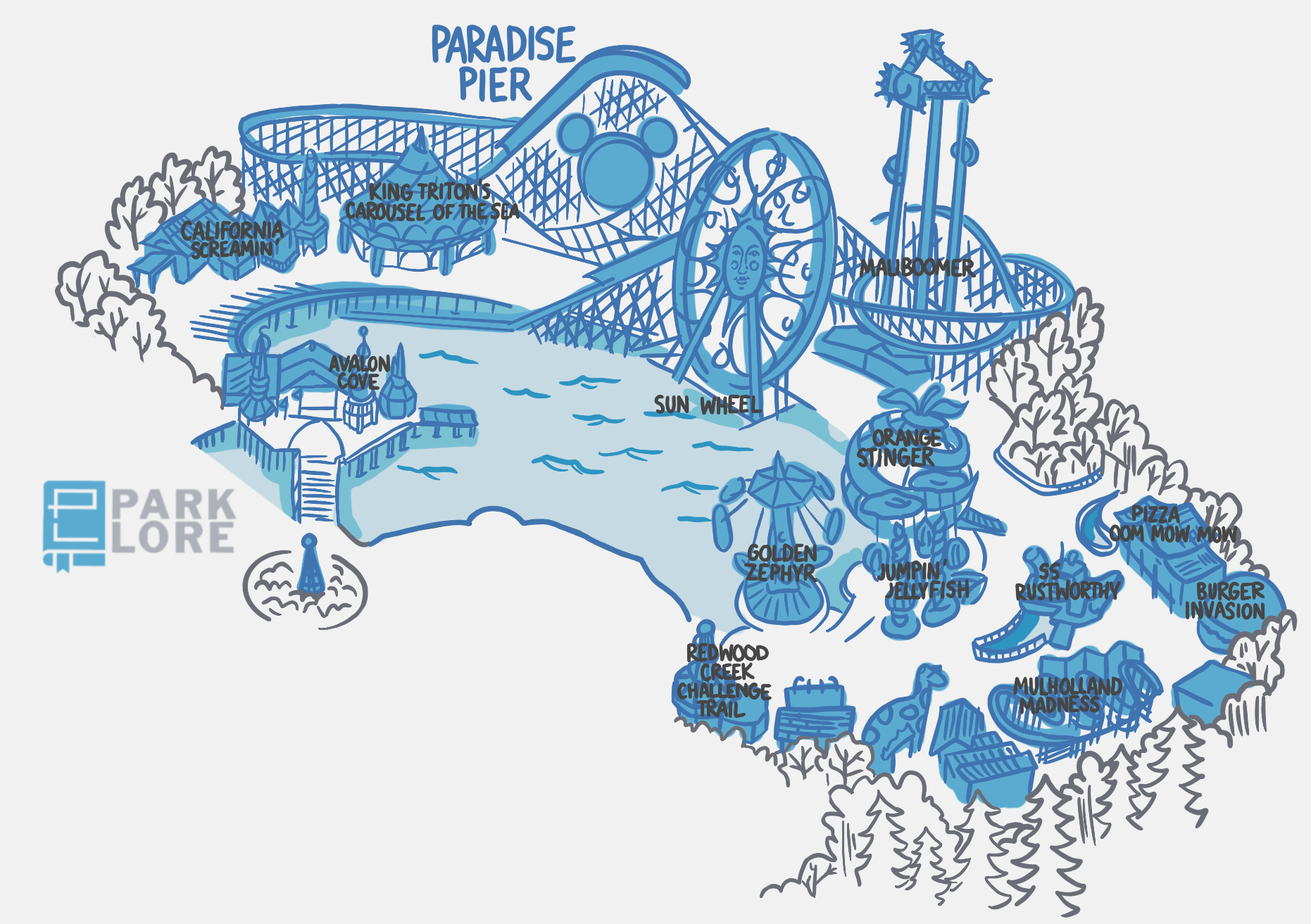
Some aspects of Paradise Pier recalled turn-of-the-century amusement parks. Elsewhere, design elements and rides recalled the ’70s, ’80s, or ’90s. Some rides were distinctly of the 2000s. That makes sense, because real seaside boardwalks and amusement parks usually are the products of centuries of layering and piecemeal additions representing very different aesthetics. But a carnival of off-the-shelf rides wrapped in stucco walls, striped awnings, modern pop music, fast food walk-ups, and “circus freak” posters didn’t feel at all like a Disney Park, and something needed to change… fast.
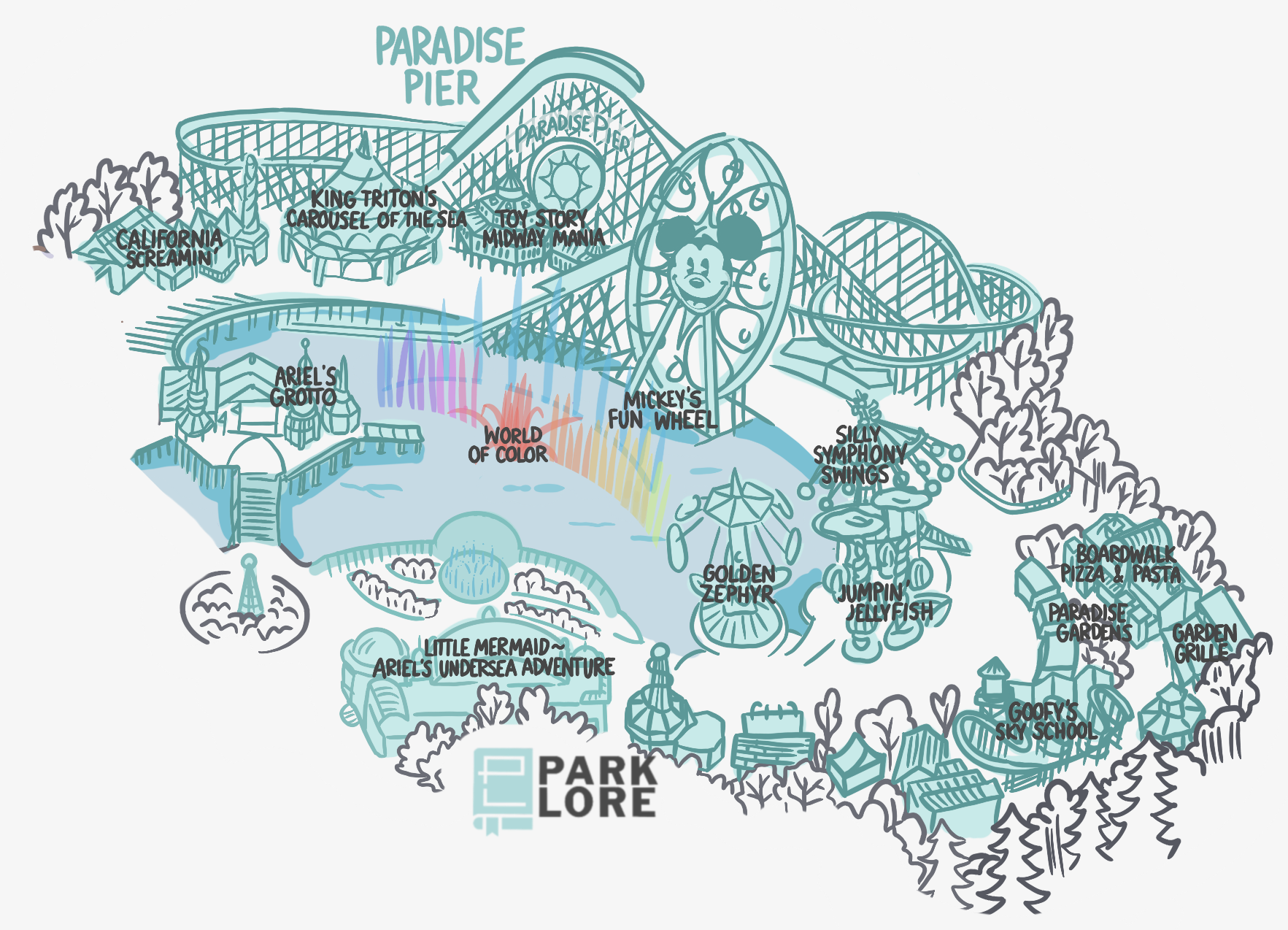
When the park officially relaunched in June 2012, Paradise Pier’s name hadn’t changed… But just about everything else about it had.
Without a doubt, it was the 2008 arrival Toy Story Midway Mania that started Paradise Pier’s transformation. Whereas the version built concurrently at Hollywood Studios was placed in a backlot soundstage, California Adventure’s came by way of a gorgeous, sand-colored, Victorian ballroom along the boardwalk – the very kind of historic dance hall such seaside piers really did open in the early 20th century.
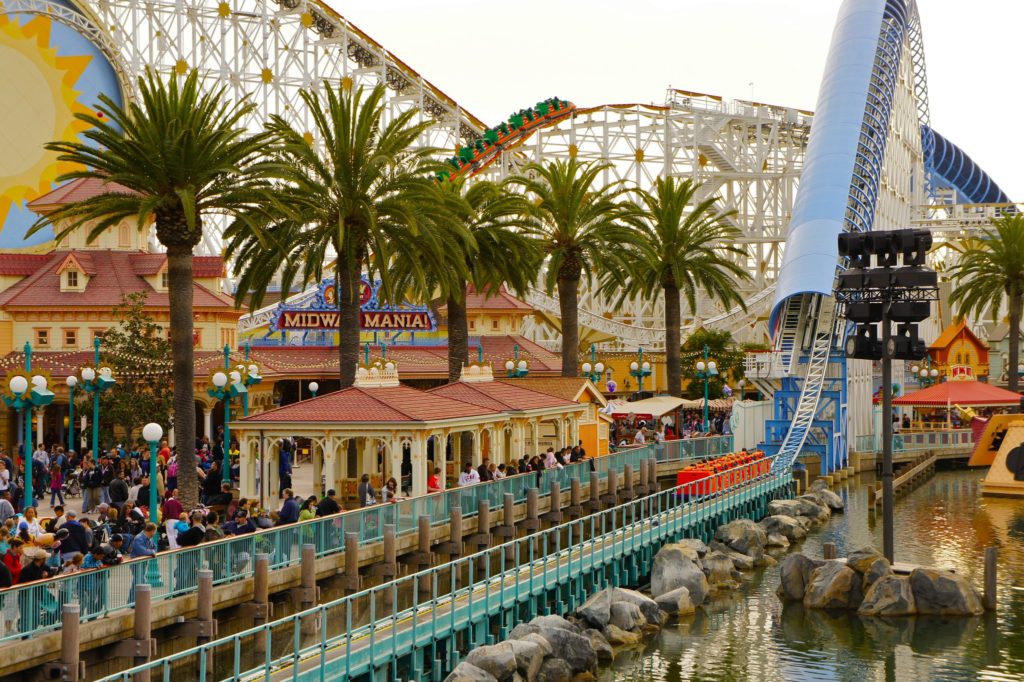
That meant that Midway Mania added an E-Ticket interactive dark ride (appropriately) sending guests off to play boardwalk-style games (like Break-the-Plate and Ring-the-Bottle) while also releasing funds that reshaped the pier’s retail and dining spaces with era-appropriate Victorian cladding, stringing up incandescent lights.
Across the land, modern signage and neon were replaced with period-appropriate billboards and murals. Garish, saturated color palettes were stripped, replaced with seaside pastels. Likewise, the modern, metallic Mickey Mouse silhouette that had long served as backdrop for California Screamin’s loop (and one of the only character “appearances” in the park) was peeled away. In its place, a turn-of-the-century sunburst mural and a glowing sign reading “PARADISE PIER” arrived. And as for Mickey…?
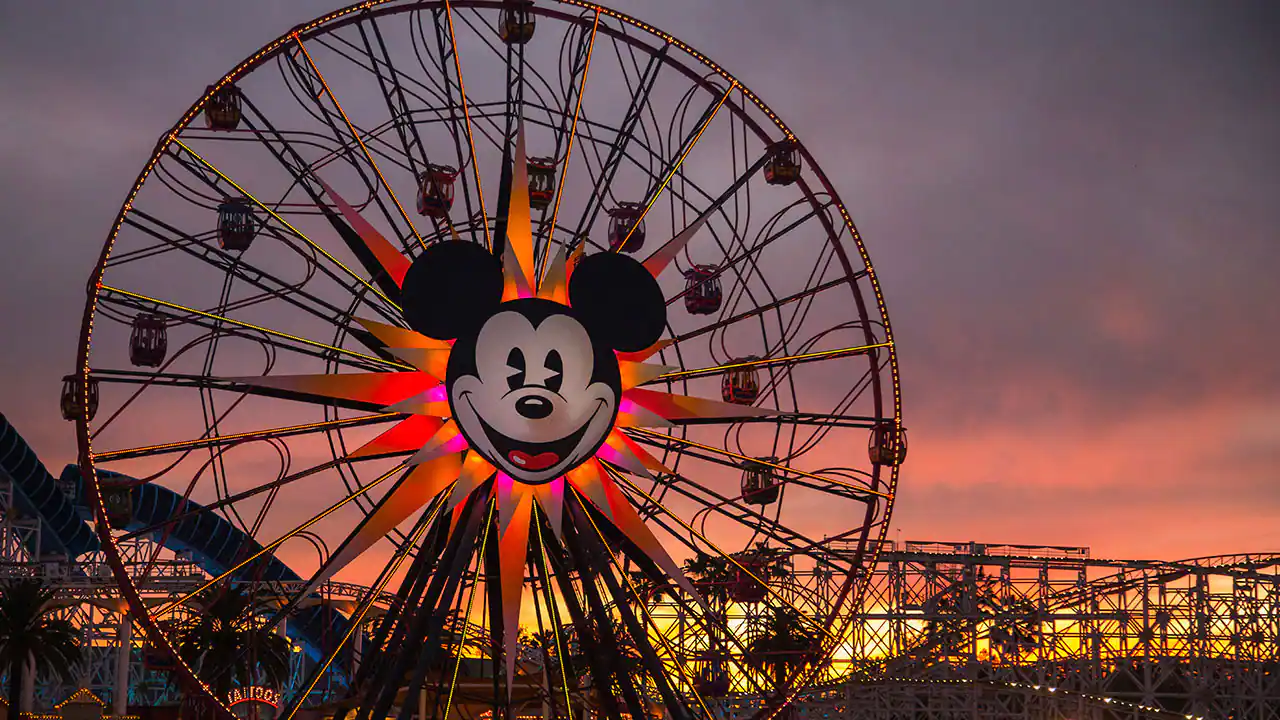
Mickey was moved to the former Sun Wheel, redubbed Mickey’s Fun Wheel. The swap from a smiling ’70s sun to a smiling ’30s Mickey may not sound like much, but Mickey’s pie-eyed face serving as a visual centerpiece for the reborn Paradise Pier mattered a lot. Because in its wake, Imagineers cleverly devised a foolproof plan for bringing more Disney characters to the park. Now, this early 20th century boardwalk would house nods to early 20th century animation!
While it would be understandable to wish that California Adventure had never had a rickety, transportable wild mouse roller coaster to begin with, the detestable Mulholland Madness was double-tacky by sending cars slaloming through a giant, cartoon, fold-out map of Los Angeles.
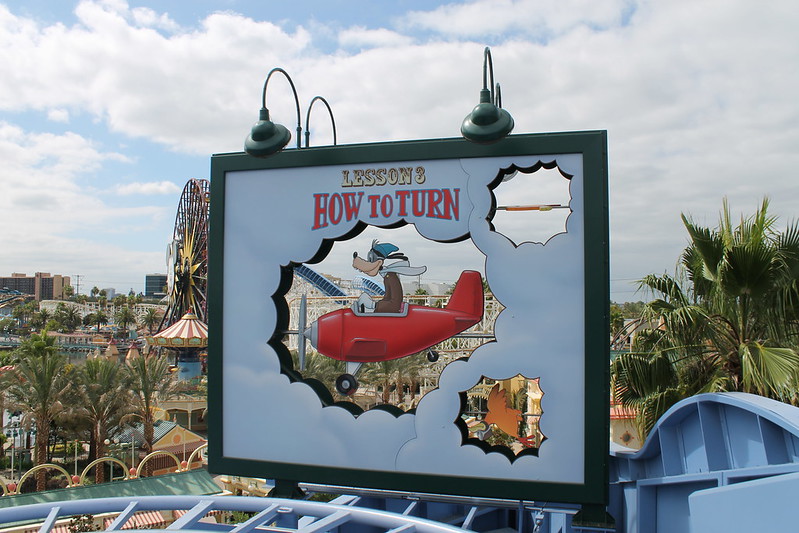
Now mercifully redressed as Goofy’s Sky School, the ride is at least cleverly themed to the 1940 short Goofy’s Glider, casting us as pilots-in-training with Goofy as our instructor. Along the ride’s course, kinetic billboards and cloud cut-outs make the cartoon flight into a lesson on taking off, turning, landing, and more. Though it’s still inherently not a “Disney-quality” ride, at least it’s more attractive to look at, and more thoughtfully presented.
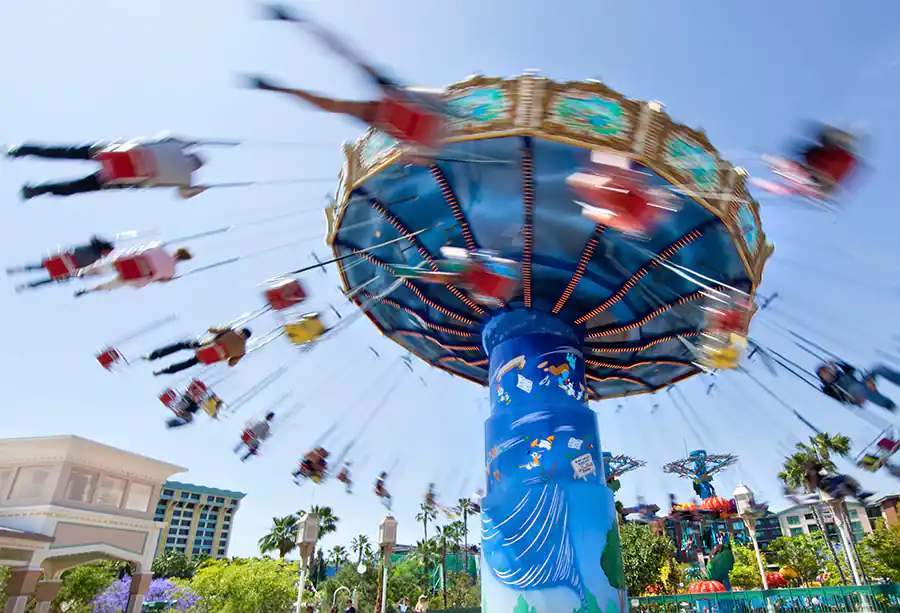
Similarly, the Orange Stinger yo-yo swings were peeled. The classic ride was re-wrapped as the Silly Symphony Swings, a colorful, kinetic homage to the 1935 Mickey short The Band Concert. Now, swirling guests would be caught-up in a wild vortex conducted by a 1930s Mickey Mouse atop the ride’s canopy, all to the tune of the stirring “William Tell Overture” from the short.
And so it goes for Jumpin’ Jellyfish and Golden Zephyr, now contextualized as classic waterfront amusement rides in a park brought to life by classic, pie-eyed Disney characters. In fact, if you question Disney’s commitment to the new, 20th century setting of Paradise Pier, look no further than the Maliboomer. Because you won’t see it. No amount of gussying up could’ve made the modern, steel, air-powered launch tower fit into a turn-of-the-century boardwalk, so in 2010, the ride – less than a decade old – was removed altogether. Paradise Pier was simply stronger with no ride there than with the Maliboomer.
The “new” Paradise Pier in “DCA 2.0” wasn’t just plussed with classic characters and timeless facades…
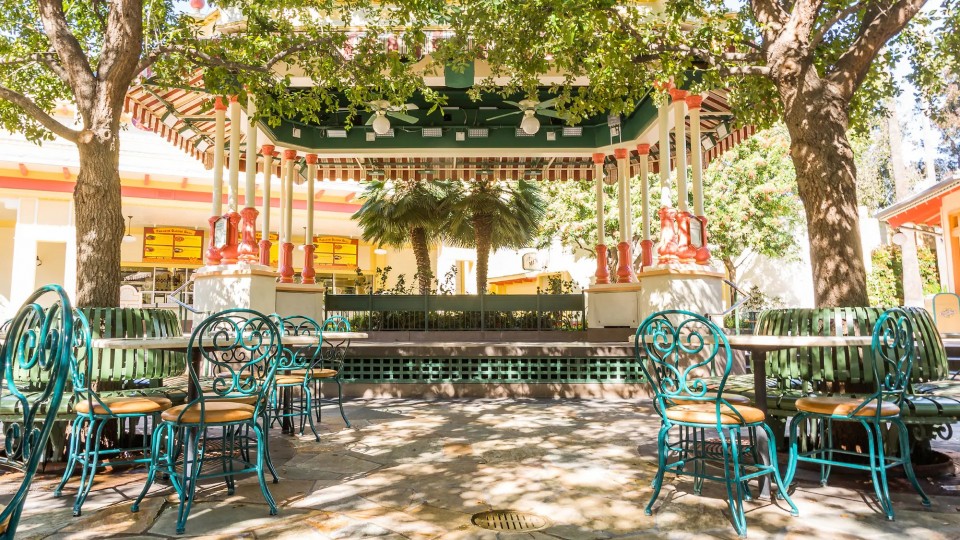
A dreadful and non sequitur “Route 66” plaza (marked by a giant dinosaur sunglasses kiosk, a giant cheeseburger food service window, and the punny Pizza Oom Mow Mow eatery) became Paradise Gardens – a jaw-dropping 1900s park and bandstand with a Garden Grille eatery and Boardwalk Pizza & Pasta restaurant, brought to life with a backstory of immigrants to California and programmed with live musical performances.
Green, shaded, and gorgeous, Paradise Gardens was exactly the kind of environment “DCA 1.0” couldn’t muster. A respite of wooden trellises, delicate gingerbread trims, wrought iron furniture, and Edison bulbs, it was a statement piece for a new Paradise Pier.
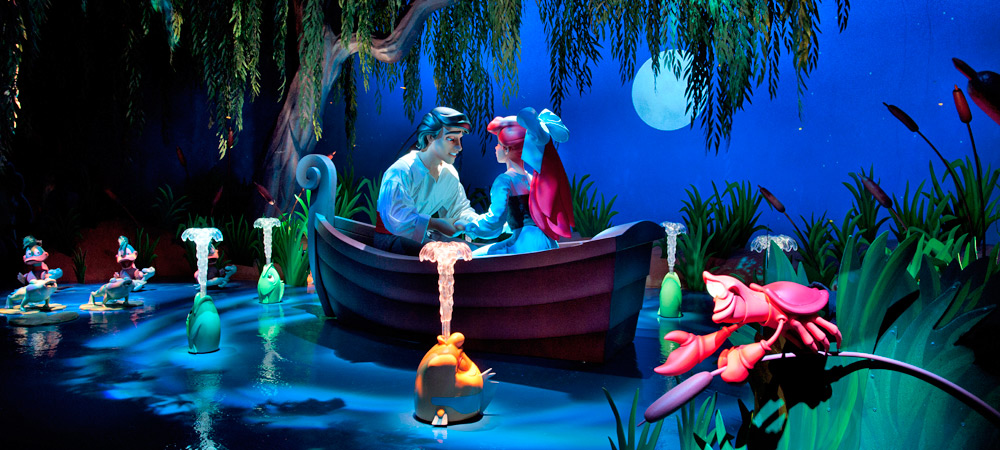
But also among the pier’s anchors was The Little Mermaid ~ Ariel’s Undersea Adventure. A dark ride based on the 1989 film that sparked the Disney Renaissance had long been in the works at Imagineering, and California Adventure’s reinvention served as a perfect spot. (After all, remember that California Adventure had zero dark rides after Superstar Limo closed, and until 2012, still had only Monsters Inc. and Midway Mania).
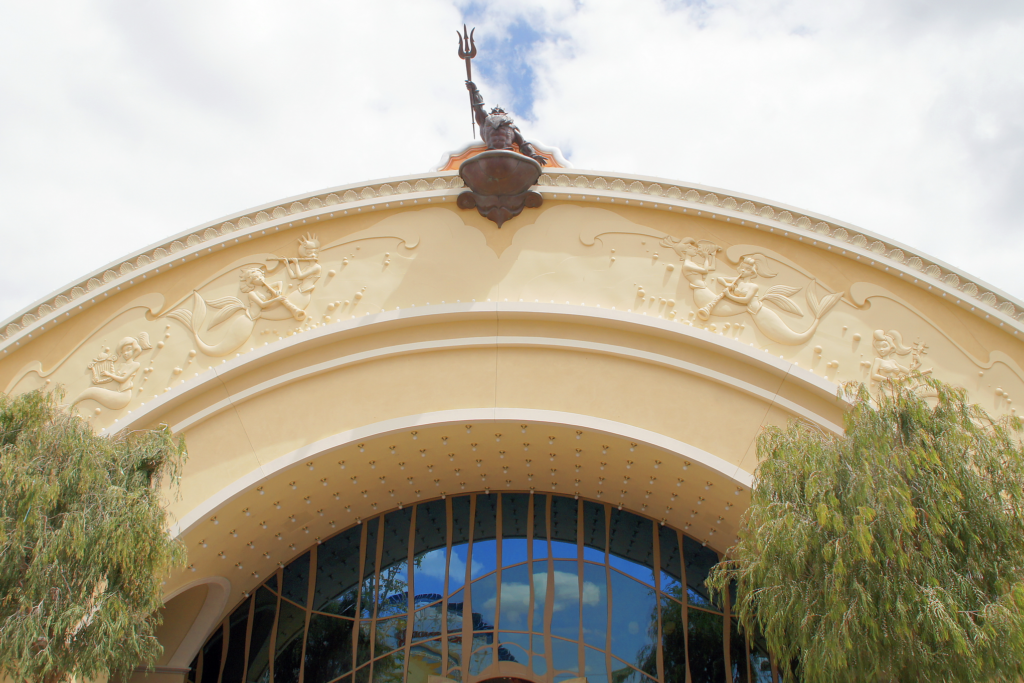
To bring The Little Mermaid to the park, the Golden Dreams theater (playing an “edutainment” film on the history of California narrated by Whoopi Goldberg) was demolished, sparing only the recreation of San Francisco’s Palace of Fine Arts that had served as its entry portal. That iconic dome was reused as the entrance to the new dark ride, housed in a beautiful 1900s aquarium (appropriate!) centered on Paradise Bay.
Fans will probably always debate whether or not Ariel’s Undersea Adventure is a good dark ride, but for California Adventure, it was clearly a beacon of what was to come. Crushed seashells in the pavement; bronze chandeliers reminiscent of seaweed; bubble-like incandescent bulbs marking the art nouveau glassed entry… when it opened in 2011, this was the first fans had really seen of the depth of texture and detail that from-scratch builds for “DCA 2.0” would bring with them…
(The Little Mermaid ride also officially absorbed the former “Bay Area” sub-section of the Golden State into Paradise Pier, leaving only the Palace of Fine Arts and an awkward line of row-houses recalling San Francisco’s Painted Ladies as memorials.)
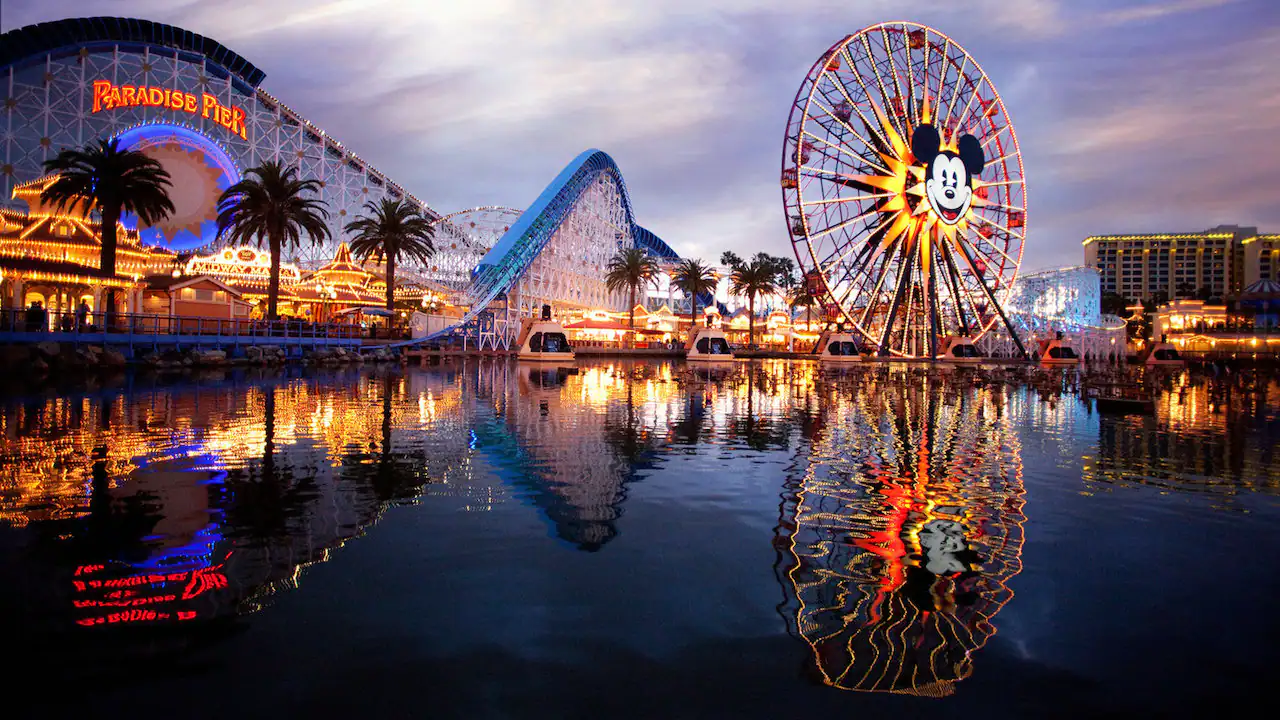
Given the pieces of Paradise Pier, there’s no question that Imagineers did a spectacular job spreading money across the land and doing what they could to “turn back the clock.” Drawing out Victorian architecture and classic, pie-eyed Disney characters, they buried the more anachronistic and in-your-face elements of the former incarnation of the land and created something more timeless, historic, and reverent.
And of course, we can say nothing of the reborn Paradise Pier without mentioning its anchor. For its first decade, California Adventure struggled to draw people at all, much less with how to entice them into staying after dark. The Lost Legend: The Main Street Electrical Parade ran at the park for years, followed by a series of after-dark dance-and-drink “parties” meant to enliven the desolate Hollywood Pictures Backlot – GLOW FEST, ElecTRONica, and Mad T Party.
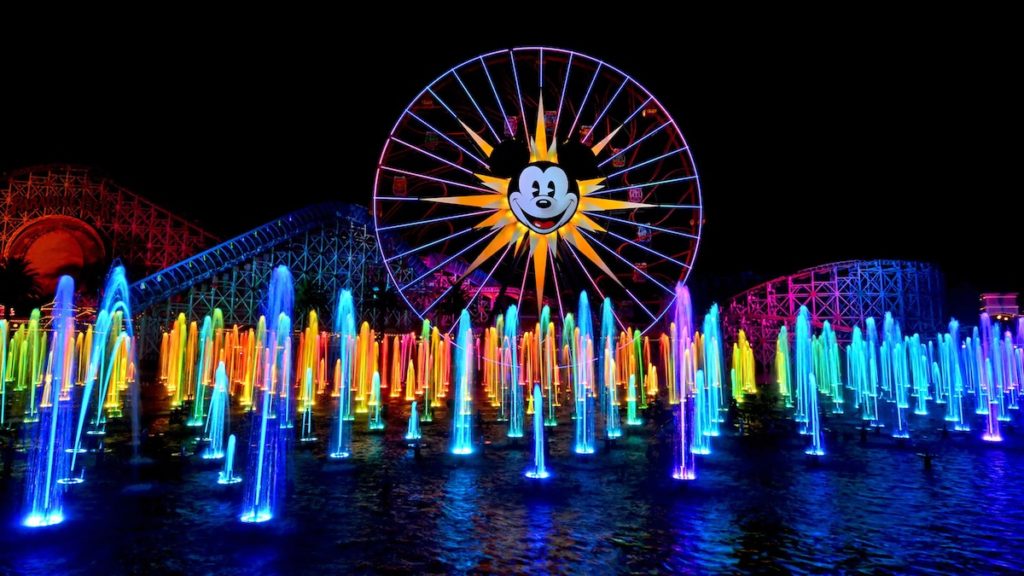
But all of it was really just a side quest en route to World of Color. Launching in 2010, World of Color was envisioned as California Adventure’s definitive nighttime spectacular; its equivalent of Disneyland’s long-running Modern Marvel: Fantasmic!. Viewed from the custom-built, 4,000-person tiered garden on Paradise Bay, the 25-minute show is truly a showstopper.
Representing $175 million (nearly 1/6 of the park’s $1.2 billion redevelopment), the show was one of the largest undertakings in the park’s history. For a full year, Paradise Bay was empty as Imagineers constructed a massive, three-piece fountain array containing 1,200 individual water spouts – many with programmable motion, and all with LED color rings. Among its many capabilities, the World of Color hardware can launch water up to 200 feet high, form a continuous 380-foot long water screen, generate its own fog, and create 50-foot tall plumes of fire.
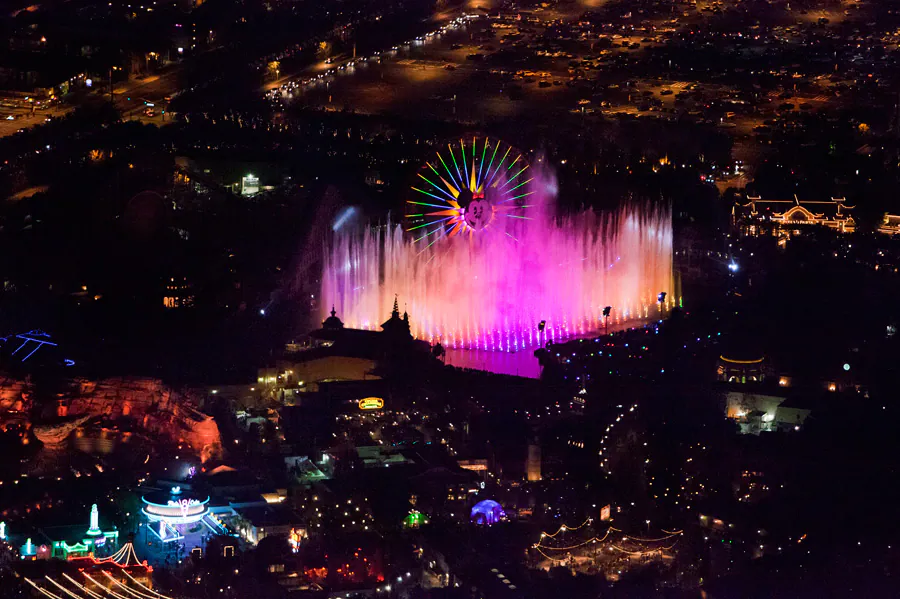
In practice, the show uses the delightfully zippy theme song to “Walt Disney’s Wonderful World of Color” television program (written, of course, by the Sherman Brothers) as a jumping off point. From there, the show is an almost-abstract journey into Disney and Pixar animation. It’s emotional and musical, exploring color’s role in ever-repeating arcs of hope, celebration, action, romance, nature, fear, loss, and joy. By time it ends (in a fusion of “World of Color,” Aladdin’s “A Whole New World,” and The Little Mermaid’s “Part of Your World”) the show’s unlikely to leave a dry eye in the crowd… be it from tears or torrents of water.
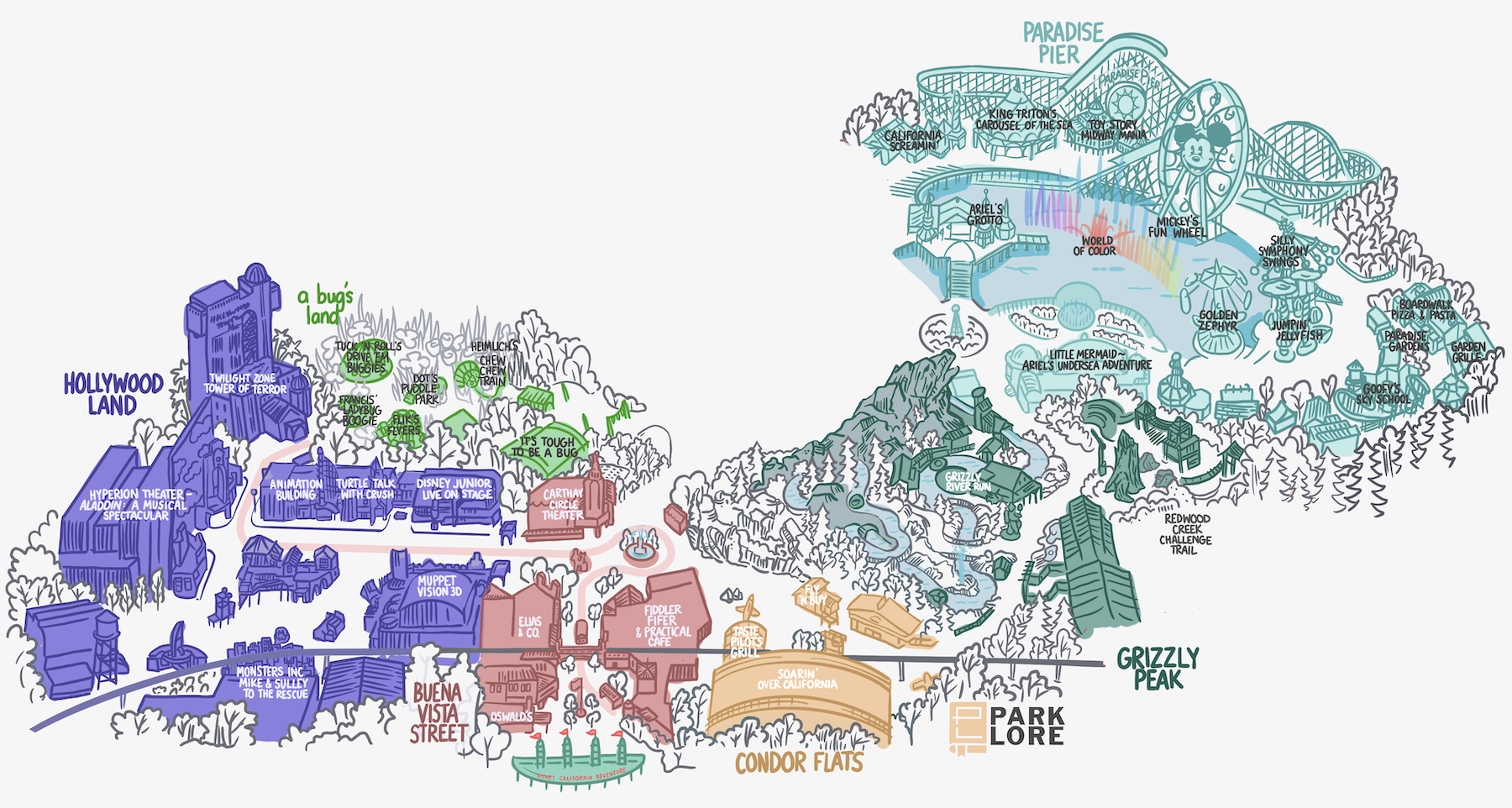
If 2002 to 2006 had been spent bolstering the park’s ride count, then 2007 to 2012 had done projects like this – the foundational re-writing that set back the clock and created in California Adventure lands with lovingly-crafted, beautifully-detailed, and period-appropriate stories at their base. And boy did it work well. But of course, the pièce de résistance of “DCA 2.0” still awaits… Read on…



